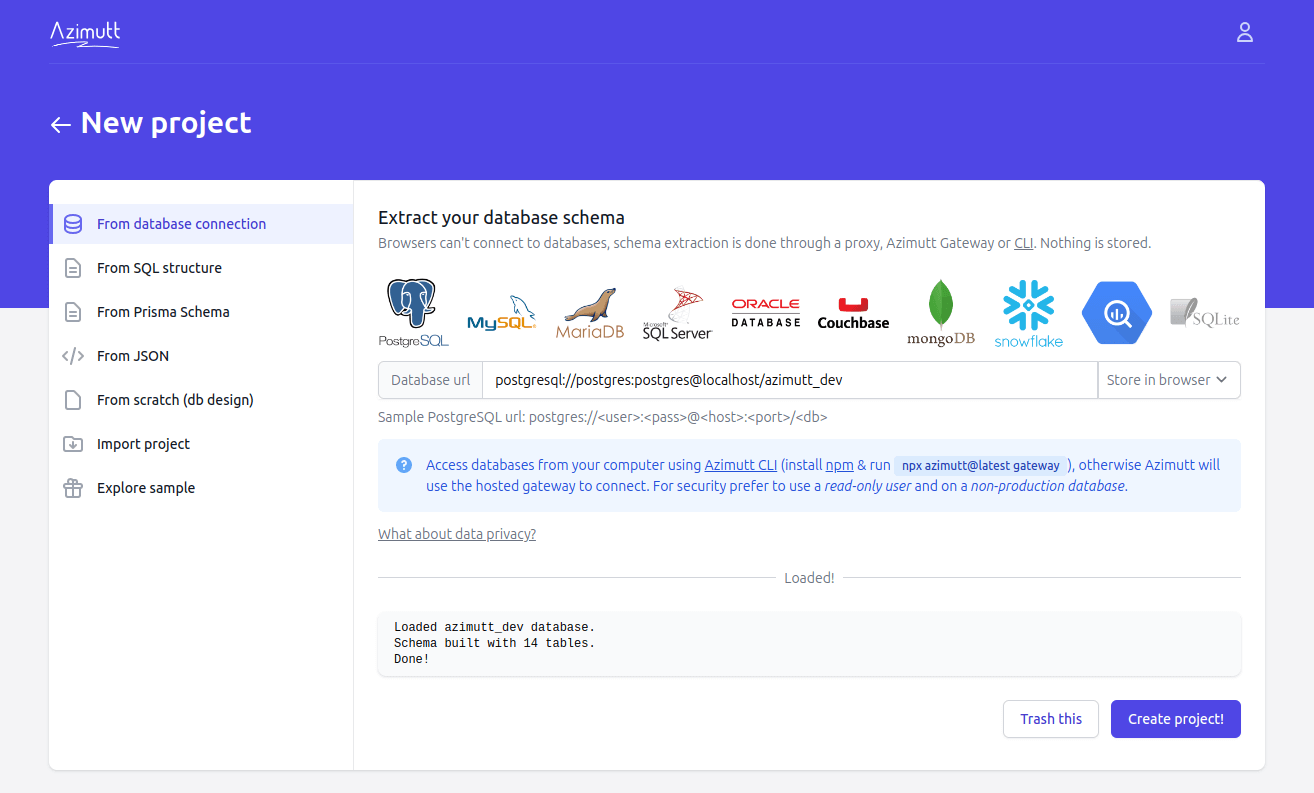Tables Relations Types Statistics Query history Triggers Procedures Query data
PostgreSQL is a powerful, open-source relational database that is widely used for its reliability, scalability, and advanced features. Known for being highly SQL-compliant, it supports both structured and unstructured data, making it ideal for a wide range of applications, from web development to data analytics. Its robust architecture allows developers to extend its functionality, plus, its active community ensures continuous improvement and support.
Azimutt is making the first database explorer targeted for real world databases: large, heterogeneous and messy 😅 If you ever looked for an Entity-Relationship diagram tool (ERD) or drew your database schema on a sheet or whiteboard, Azimutt is made for you. But it goes well beyond that with database documentation, cross-database data exploration and even linter and monitoring of your database.
The PostgreSQL connector is full-featured and can do everything available in Azimutt 😎
Azimutt being Open Source, you can find the
PostgreSQL connector
on GitHub if you are interested in looking what it does or improving it.
The most interesting part being the getSchema function in
src/postgres.ts.
In addition to PostgreSQL schema extraction it makes inference for:
- Polymorphic relations
- JSON column schema
How to use it #
The PostgreSQL connector is baked into the Gateway, to use it you just have to:
- Launch your Gateway, if needed (for the local one use
npx azimutt@latest gateway) - Create a new project or add a source to an existing one
- Fill your PostgreSQL database url (ex:
postgresql://user:pass@localhost/your_db)

Here are more details about how Azimutt secure your data and especially your database url.
If you don't have a PostgreSQL database right away, you can use Docker to create one with:
docker run --name postgres_sample -p 5433:5432 -e POSTGRES_PASSWORD=postgres postgres:latestAnd use this sample script to populate it.
Here is what you can do with Azimutt:

